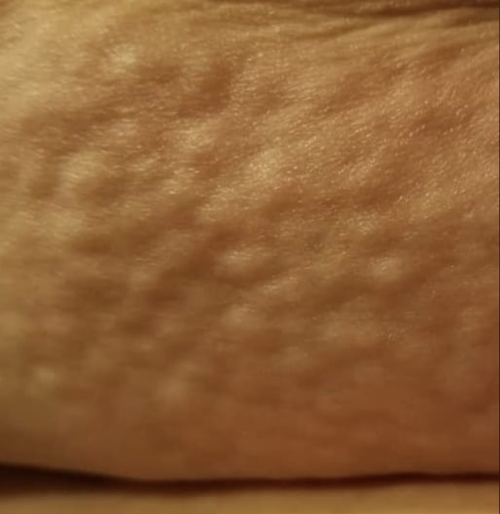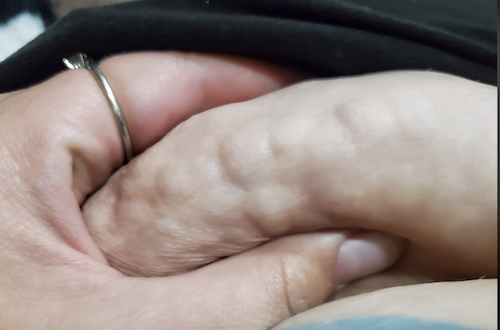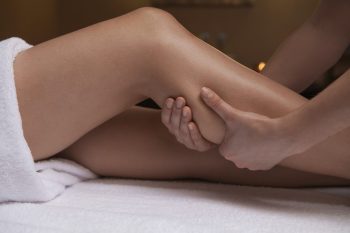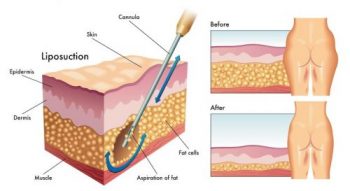Lipedema FAQ
Who Gets Lipedema?

Not many people have heard of Lipedema, so here is a FAQ about Lipedema that will help you learn more about the disease.
Lipedema is a disease that almost always occurs in women.
While it can occur in men, it is extremely rare.
It is estimated that approximately 17 million women in the United States suffer from Lipedema.
Women who are heavier, especially women who are obese, seem to be affected far more than women who are a normal weight or who are thin.
Yes, you can be thin and have Lipedema. Women who are of normal build or thin everywhere may have disproportionally large hips and legs.
How Do I Know if I Have Lipedema?
What are the Symptoms?
Lipedema is characterized by a bilateral (both sides of the body) distribution of fat usually in the lower body that is disproportional to the size of the upper body. That being said, some people do also get Lipedema in their upper arms. The distribution of the fat is symmetrical between right and left whether it occurs in the legs or the arms.
In the first 3 stages of Lipedema, the feet are typically spared. This means that although the legs may be quite large, the feet do not show the same appearance and look “normal.” Bones are usually still quite visible, and there appears to be no swelling. When Lipedema reaches the final stage, it is coupled with Lymphedema (swelling), and this does affect the feet.
“Lippy Fat” is distinctively tender. Nearly all people with the condition experience pain in their fat.
“Lippy Fat” bruises very easily and the bruising may last considerably longer than elsewhere on the body.
Lipedema is also distinguished by distinct lumps of fat that can be quite tender or painful.


Most women who go to their doctor to get a diagnosis are told that they are “just retaining water” or “just have fat legs” because the medical community in general is not aware of this condition. Sometimes the condition is also misdiagnosed as Lymphedema.
When Does Lipedema Start?
Lipedema is thought to be triggered by hormonal changes.
It can start to show around puberty in young girls, or it may become evident later when a woman becomes pregnant. It may also reveal itself after a woman has had a hysterectomy or during menopause.
Another possible trigger is trauma or surgery, although the reason these events may cause it to show is unknown.
What Causes Lipedema?

What exactly causes Lipedema is not known. At this time there are only educated guesses on why it occurs.
One guess is that it is an inherited condition. Approximately 50% of people with Lipedema have a relative who has Lipedema.
It is believed that hormones are a major factor in causing its onset because of when women tend to see the symptoms begin, but it is not yet understood what role hormones play.
Although men very rarely get Lipedema, when they do it is often traced to cirrhosis of the liver or hormone therapy.
What is the Non-Surgical
Treatment for Lipedema?
Current studies suggest a combination of several techniques for treating Lipedema non-surgically: Complete Decongestive Therapy (CDT) , deep Myofascial Release and IASTM/Gua Sha.
Complete Decongestive Therapy includes Manual Lymphatic Drainage (MLD) or Electro-Lymphatic Therapy to drain fluid from the affected area plus specialized compression garments to keep the area from swelling again after treatment.

Deep Myofascial Release and IASTM/Gua Sha (deep massage technique done with an instrument) is then performed to break up abnormal fascia that grows in between the “lippy fat” cells. This technique is uncomfortable and may cause bruising, but the end result is relieving in that on-going pain is significantly reduced.
Together, these therapies improve the appearance of the legs and reduce chronic pain associated with the condition. Although the thought of having aggressive therapy done on tissue that is very sensitive likely sounds terrifying to anyone with lipedema, the research shows that the long-term benefits outweigh the temporary discomfort.

What is the Surgical
Treatment for Lipedema?
Historically, surgery has been considered a last resort as it carries a number of risks. However, in people who have lipedema it is quickly becoming a reasonable option that is starting to get coverage by insurance. (See more info on that here on the Lipedema Management page.)
The surgical procedure that is done for lipedema is a highly specialized form of liposuction. It uses very small cannulas (the tubes that suck out the fat) in order to do as little damage to the lymphatic system as possible.

The lymphatic system is responsible for draining the fluid from our limbs. In people who have advanced Lipedema, the lymphatic system is either at high risk or is damaged. Damage to the lymphatic system in the later stages of the disease causes a condition known as Lipo-Lymphedema. This is a combination of Lipedema and Lymphedema.
While it was previously believed that liposuction may further damage the lymphatic vessels, it has been shown in recent studies that lymphatic vessels actually tend to regenerate after surgery and are more functional than before surgery.
It is critical to make sure your surgeon is trained in this specific form of liposuction and is knowledgeable about Lipedema. A good way to locate these surgeons is via social media groups on Lipedema.
Does Dieting Help Lipedema?
Dieting in the traditional sense, meaning caloric restriction in order to lose weight, does not work to reduce “lippy fat.” This is extremely frustrating to people who suffer with Lipedema.
Despite regular caloric restriction not improving Lipedema fat, the reduction of overall normal body fat (non-Lipedema fat) does help to slow the progression of the disease.
The Ketogenic Diet has been shown to actually reduce lippy fat.
One of the leading voice in the attempt to find effective treatments for Lipedema is Dr. Leslyn Keith, my mentor and trainer to become a Certified Lymphedema Therapist. Dr. Keith is very well-known and respected in the Lipedema wold. You can visit her website here for further information on the Keto Diet and Lipedema.
Not everyone, however, is a believer in the Keto Diet as a therapy for Lipedema.
The book Lymphedema and Lipedema Nutrition Guide: foods, vitamins, minerals, and supplements does provide eating guidelines for people with Lipedema which can help to manage the disease. It shares alternative ways to make diet modifications to positively impact Lipedema.
Lymphedema and Lipedema Nutrition Guide:
Foods, Vitamins, Minerals and Supplements
(amazon link)
Does Exercise Help Lipedema?
This is a loaded question. The answer is Yes, and No.
The bad news is that exercise does not help reduce Lipedema fat, no matter how intense and how long you may do it.
The good news is that exercise will help reduce regular body fat which does help keep Lipedema somewhat in check. Women with higher percentages of body fat have a harder time battling Lipedema.

I’m Confused.
What is the difference between “Normal Fat” and “Lippy Fat”?
How does controlling normal fat help lipedema?
This is a question that I get a lot. “Normal fat” is something that everyone has. Some people have more, some people have less.
In people with Lipedema, there is a second kind of fat that many people call “Lippy Fat.”
Fat is a metabolically active tissue. Fat essentially tries to make more of itself by secreting hormones that cause us to have more hunger than necessary.
If you have lipedema, it is important to keep the amount of normal body fat as low as possible so that its effect on the lipedema fat is minimal. Even in people with lipedema, normal fat still responds to regular diet and exercise.
Lipedema – Myths and Facts
by T. Bertsch1 and G. Erbacher
of the Föeldi Klinik, Germany
The Földi Klinik in Hinterzarten, Germany is the world’s foremost clinic on lymphology.
Established in 1979 by Professor Michael Földi and Professor Etelka Földi, the clinic trains doctors and therapists alike in the treatment of lymphedema and lipedema.
This series of articles on the Myths and Facts surrounding Lipedema are an excellent resource for anyone wanting to know more about the condition.
Part 1
Part 2
Part 3
Part 4




